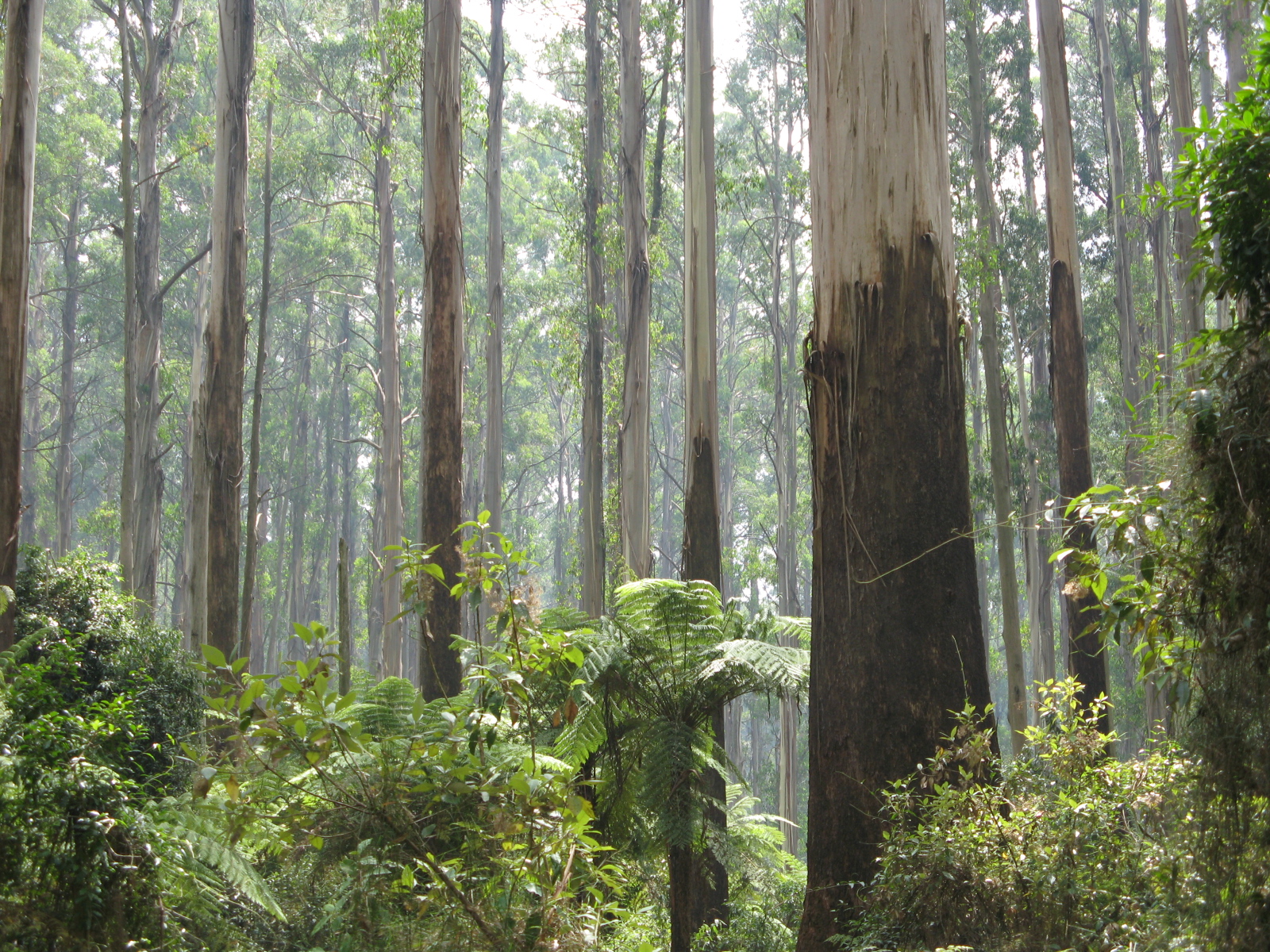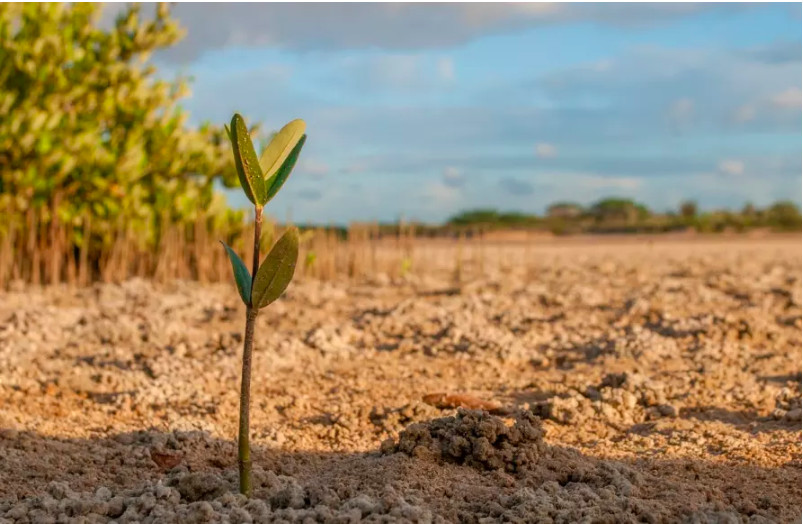
Planting trees is no substitute for natural forests

Allowing degraded natural forests to re-grow is a more effective, immediate and low-cost method for removing and storing atmospheric carbon than planting new trees
Published 7 August 2019
The role that trees can play in solving the climate crisis is receiving growing attention.
This will be highlighted as the Intergovernmental Panel on Climate Change (IPCC) meets in Geneva to approve the final summary of a Special Report on Climate Change and Land, to be released on 8th August.

The Report will outline the current status and projections on land degradation including deforestation and desertification (when fertile land becomes desert), as well as sustainability options for agriculture and food security.
Two years ago, a study reported that these natural climate solutions can provide approximately 37 per cent of the carbon dioxide reduction needed to keep the rise in global temperature below 2°C degrees – as outlined in the Paris Agreement.

A more recent paper in the journal Science called The global tree restoration potential’, reported that “a trillion trees could be planted” to tackle the climate crisis.
But research on ‘nature-based solutions’ can be misinterpreted to imply that the priority is to plant young trees. In fact, the major climate solution from the land is the protection and recovery of carbon-rich primary ecosystems, especially natural forests.
With the imminent release of the new IPCC report, now is a good time to prioritise the protection, recovery and buffering of primary ecosystems before planting trees.
Forest ecosystems (including soils) store more carbon than is found in the atmosphere. Their loss and degradation would trigger emissions that would cause global warming to exceed the two degree, let alone the 1.5°C degree threshold.

So, avoiding further loss and degradation of forest biodiversity and carbon stores is an essential and complementary mitigation action that goes hand in hand with the rapid transition from using fossil fuel to clean energy.
These forest ecosystems – the result of ecological and evolutionary processes – and their natural patterns of distribution and abundance of plants and wildlife have greater resilience to external shocks.

Sciences & Technology
All the forests in the world from a single layer of cells
They can adapt to changing conditions and store more stable natural carbon stocks than young, degraded or plantation forests.
New research also demonstrates the globally significant potential of allowing degraded natural forests to continue re-growing in order to reach their ecological potential.
This approach – called proforestation - is a more effective, immediate and low-cost method for removing and storing atmospheric carbon in the long-term than tree planting.
And it can be implemented across suitable forests of all types.
Growing existing natural forests to maturity optimises their biological sequestration potential to remove carbon dioxide from the atmosphere. Biological sequestration refers to the removal of carbon dioxide from the atmosphere by plants to then be stored in vegetation and soils.
As well as maximising cost-effective and natural carbon sequestration, proforestation also provides other benefits such as clean water supply from filtration by tree roots.

Forest degradation, which occurs extensively throughout all forest biomes, is caused by selective logging, temporary clearing and other human land-use impacts.
Emissions from degradation can exceed those of deforestation in some areas. Once damaged, natural ecosystems are more exposed to further impacts from drought, fires and climate change.

Sciences & Technology
Planting trees for the Earth
Proforestation offers considerable benefits to biodiversity and climate change mitigation as it improves the resilience of natural forest ecosystems, securely storing more carbon over time than forests that are managed for commodity production or monoculture plantations.
Avoiding further loss and degradation of primary forests and intact forest landscapes, and allowing degraded forests to naturally regrow, would reduce global carbon emissions annually by about one gigatonne or 1 Gt, and reduce another two to four Gt of carbon emissions through just allowing natural regrowth.
Both these kinds of mitigation actions or reductions are available to all forested countries, and research shows that community land tenure systems are the best ways of achieving these outcomes.
Tree planting or, in policy jargon – afforestation or reforestation – carries more limited climate benefits.
Another recent Science paper focused on mapping and quantifying increases in tree canopy cover in areas that naturally support trees.
However, increasing canopy cover through natural regeneration of degraded forests has superior climate benefits by sequestering 40 times more carbon over the course of the century than establishing new plantations.

We need to think very carefully about how we use land that has already been cleared – land is a finite resource and is required for growing food and woody fibre for a population set to hit nine billion by 2050.
Any expansion of natural forest area is best achieved through allowing degraded forests to naturally recover.
Allowing trees to regenerate naturally, using nearby remnants of primary forests and seed banks in the soil of recently cleared forests, is more likely to result in a resilient and diverse forest than planting massive numbers of seedlings.

The resilience and longevity of primary forests’ carbon stores will be enhanced if restoration prioritises buffering and reconnecting forested areas.
This will result in larger and more stable and longer lasting carbon stores.
Protecting primary forests while allowing degraded forests to recover, along with limited expansion of natural forests, has been predicted to result in 153 billion tonnes of atmospheric carbon removal.
This scale of sequestration is comparable to what ecologist Jean-François Bastin and his colleagues forecast with 900 million hectares of new canopy cover.
But, it relies on only 350 million hectares of forest expansion, with forest protection and restoration offering significant mitigation potential.
This represents a considerably less risky proposition in terms of the scale of land-use change.
For forests to effectively help avert dangerous climate change, global and regional policies are needed to protect and restore primary forests, aided by natural forest regeneration and a carbon-zero energy economy.
A version of this article was co-published with The Conversation.
Banner image: Shutterstock

